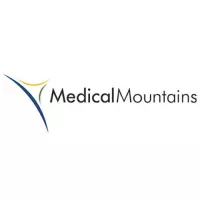Tuttlingen – The 15th Innovation Forum Medical Technology will dedicate an entire lecture session to the topic of simulation on October 19th. Prof. Dr. explains why this is not a “nice to have” but a pure necessity in the healthcare system. Dirk Wilhelm made this clear in his keynote – and also held medical device manufacturers accountable.
“Simulation is the central element of tomorrow’s healthcare.” The senior physician at the Surgical Clinic and Polyclinic of the Rechts der Isar Clinic (TU Munich) has a precise idea of where the path leads: to “virtual medicine”. On the surface, you could imagine a world full of apps and VR glasses. But that's what Prof. Dr. Not Dirk Wilhelm. His vision is a virtual image of a clinic that can be used to plan, monitor, control and optimize processes. Not just in its facility, but ubiquitously.
Prof. Dr. Dirk Wilhelm makes the abstract tangible using an example. Currently, cancer patients are categorized according to the TNM classification. How big is the primary tumor, are lymph nodes affected, are there distant metastases. Three properties are intended to represent a highly complex state. But what if gender, age, weight, previous or chronic illnesses and other factors could be evaluated: “The statements about therapy and treatment success would become more and more precise.” Even the surgeons would be part of this model, depending on whether a young assistant operates or an experienced chief physician. The technology could help make the right decisions in critical areas - and actually act autonomously in non-critical points such as shift or vacation planning.
For a simulation to work, it needs one thing: data, data and more data. There is basically no shortage of this in a hospital. The point is rather: How can everything that is noted, photographed, measured, filled, consumed, used or even spoken there every day be recorded and evaluated? The hospital information system and logs are obvious sources. Medical technology, of all things, is one of the tricky cases. For example, photodetectors have to be attached to light-emitting diodes in order to record whether a device is switched on or off. So what can the industry do? “The most important thing is that we understand and pursue the approach together,” says Prof. Dr. Dirk Wilhelm welcomed the Innovation Forum and the dialogue with manufacturers. What is needed are devices with interfaces and adaptive systems, more cooperation between hospitals and industry - the goal is to eliminate the separation between medical technology and medical care: "The challenges can only be met together."
What Prof. Dr. What Dirk Wilhelm presents in his keynote is much more than wishful thinking or a “nice to have”. Given the difficult conditions in the healthcare system, it is pure necessity. “We don’t want to use technology to replace staff,” he makes clear, “but rather distribute the resources so that medicine can become more medical again” – thanks to simulation, we want to make care what it should be in reality again.
The keynote speech “Model-based medicine – from simulation to better care” by Prof. Dr. Dirk Wilhelm starts at 10:15 a.m. in the Great Hall.
Further information about the 15th Innovation Forum Medical Technology can be found at this link.
Not registered for the Innovation Forum yet?
Use this link to register!





